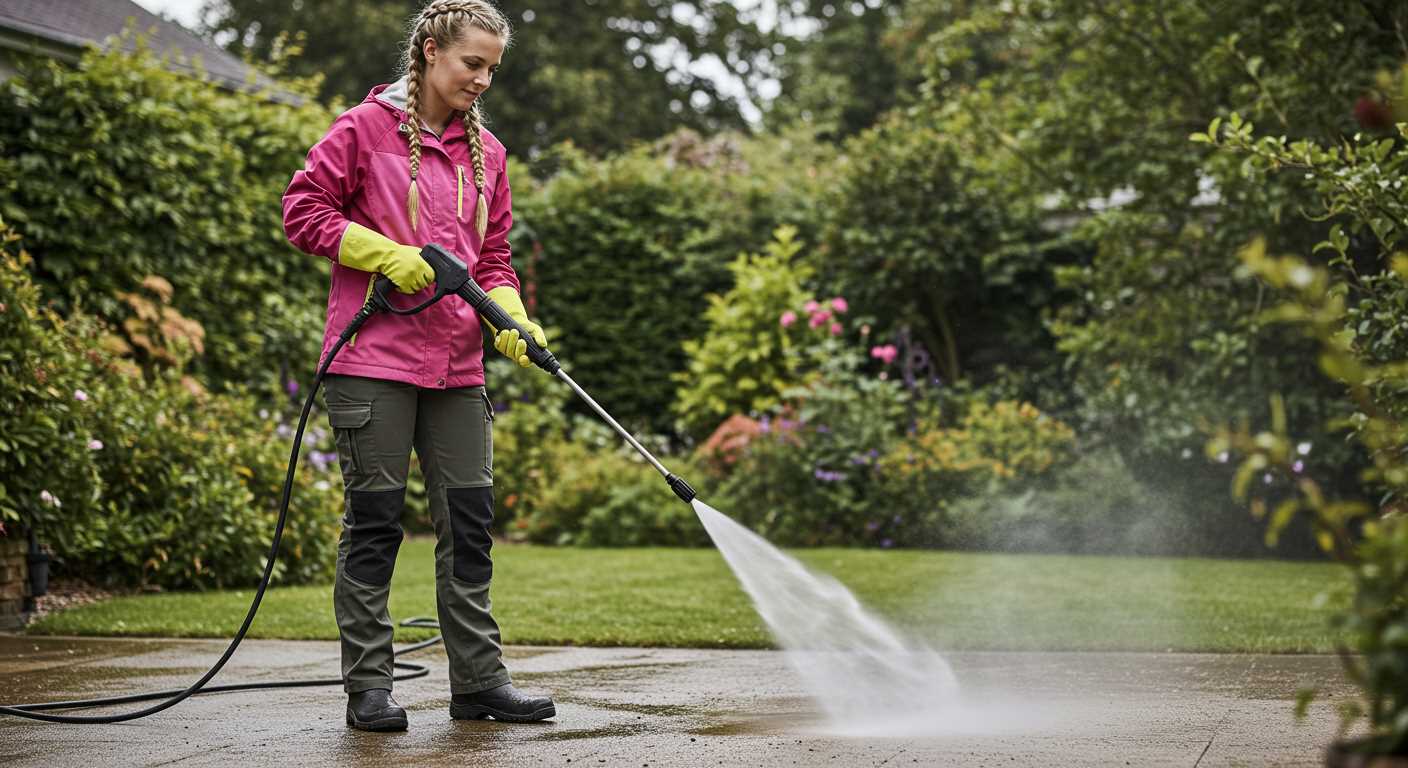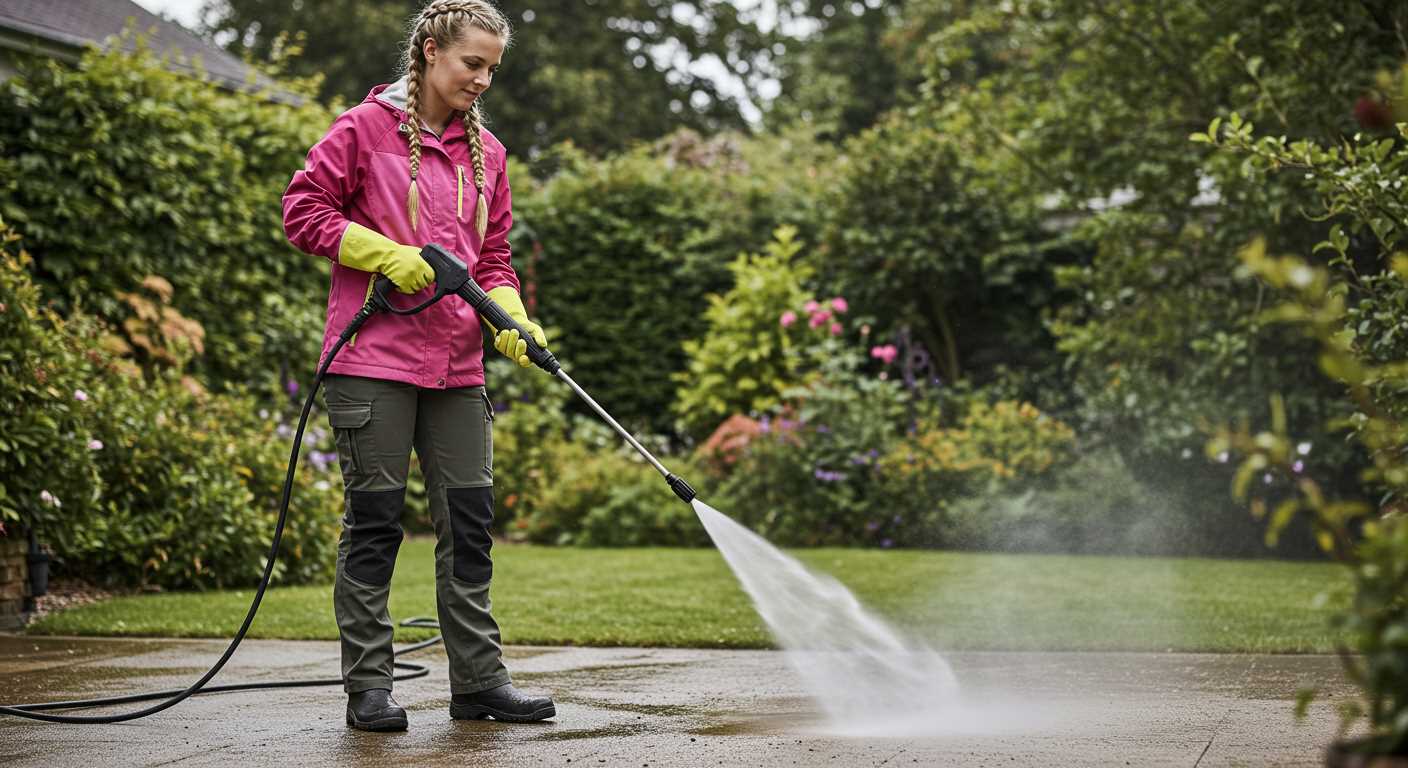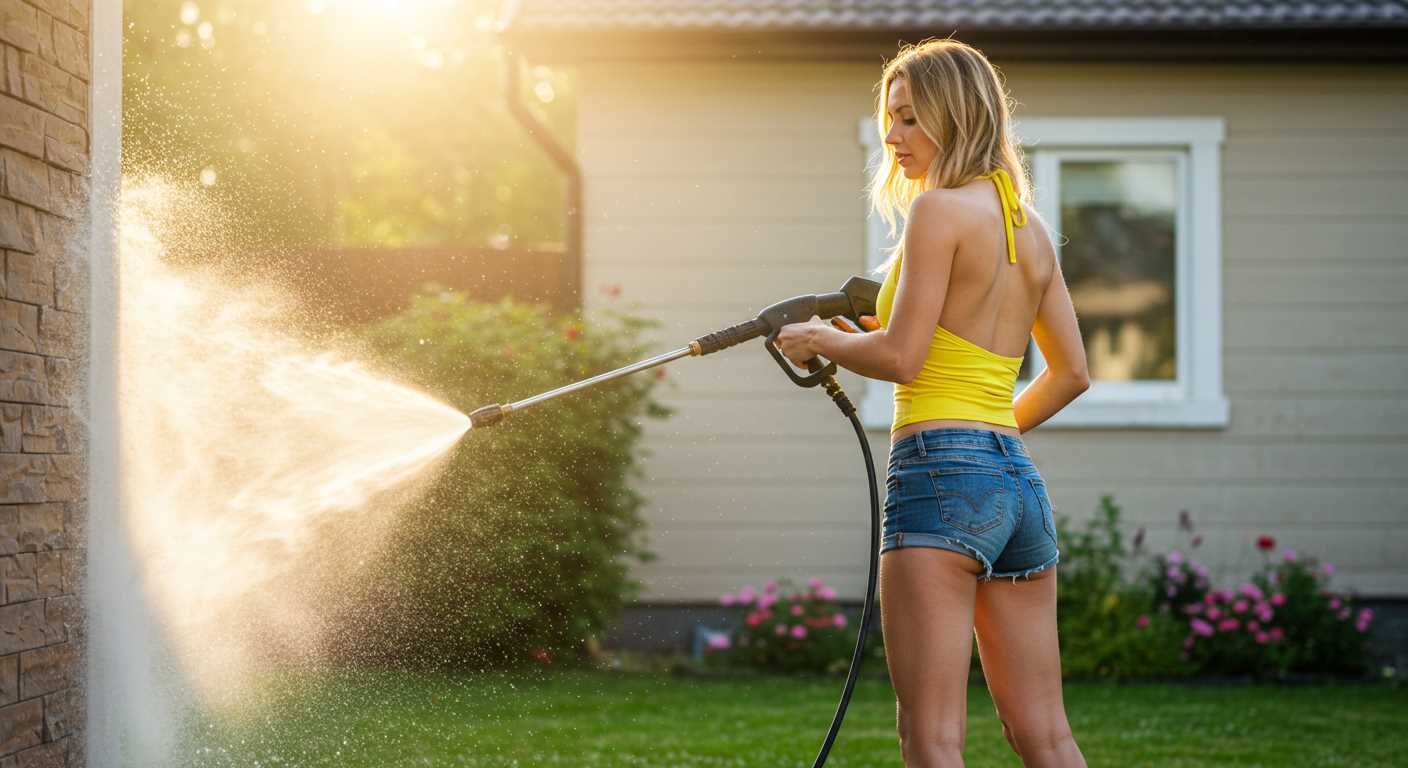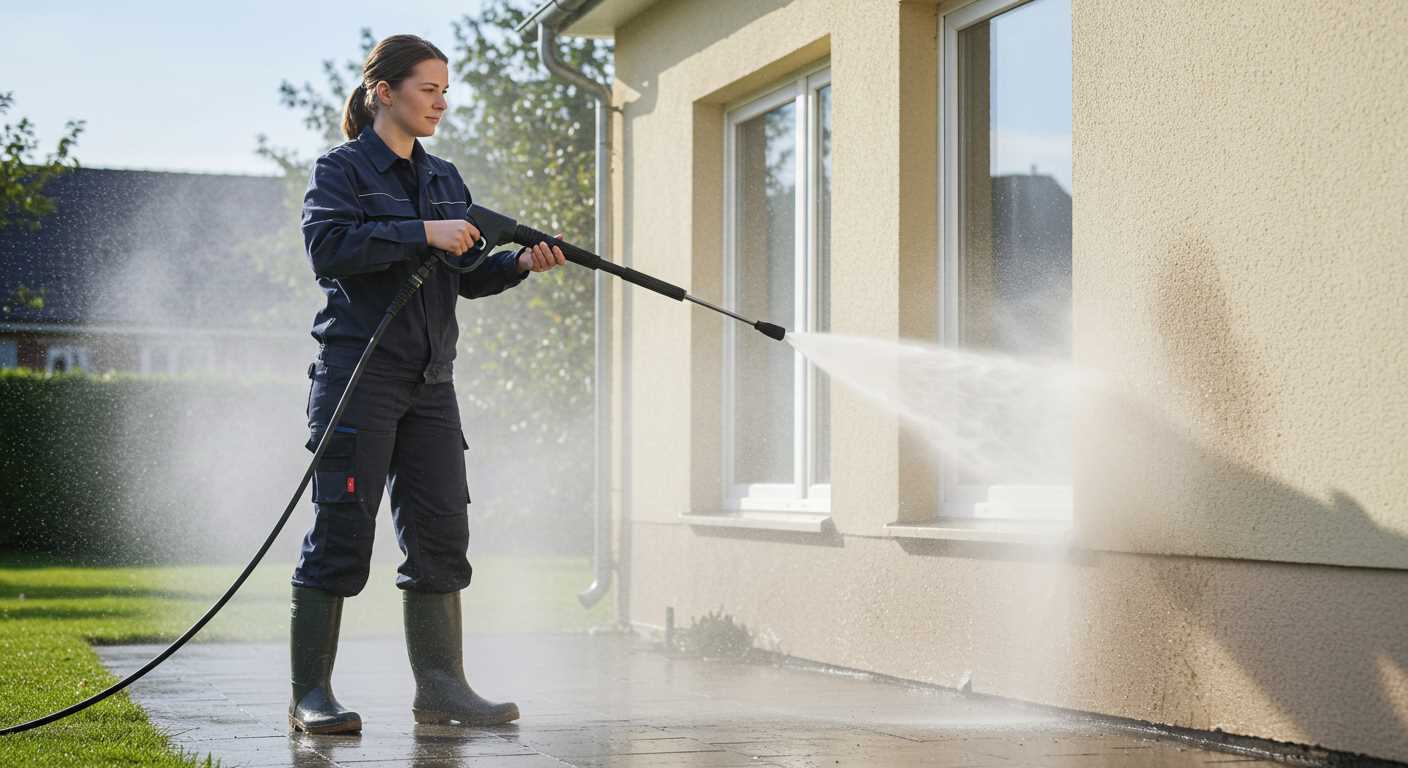




Begin by gathering your supplies: a high-quality cleaning solution specifically designed for metal surfaces, a sturdy brush, and a reliable hose attachment for your equipment. Preparing the area is just as crucial; ensure you have a stable surface and ample space to manoeuvre. An outdoor setting is preferable to avoid any water damage indoors.
Before any water is sprayed, I recommend applying a degreaser to the most soiled areas. This step is essential in breaking down the grime and grease that accumulates over time. A gentle scrub with a brush will help lift the dirt. I recall a particularly stubborn batch of oil stains from a long ride; using a dedicated cleaner made all the difference.
When you’re ready to start rinsing, keep your distance. Maintaining a safe space of at least two feet from the surface prevents potential damage to delicate parts. I once got too close, resulting in a cracked casing–an expensive mistake! Aim the spray at an angle rather than directly at the components to effectively remove dirt without causing harm.
After rinsing, inspect for any missed spots. You might find that some areas require a second treatment, especially if they have been neglected. Always follow up with a thorough drying process using a soft cloth to prevent water spots and rust.
Finally, don’t forget to apply a protective layer once everything is dry. A quality wax or sealant can help maintain that freshly cleaned look and shield against future build-up. Trust me, investing this time will pay off in the long run, keeping your two-wheeled companion in top form for years to come.
Cleaning Your Ride’s Components
Before starting, ensure the bike is cool to prevent any thermal shock. First, cover sensitive areas like the air intake, electrical connections, and any exposed bearings with plastic bags or tape. This step protects them from water ingress.
Position the sprayer at least 2 feet away from surfaces to avoid damage. Utilize a fan nozzle attachment for a wider spray pattern. Adjust the pressure to a medium level; too high can strip paint or damage seals. Start from the top and work your way down, allowing dirt and grime to flow downwards.
Apply a degreaser to stubborn spots, letting it sit for a few minutes. This loosens the grime, making it easier to remove. After spraying, rinse thoroughly, ensuring no soap residue remains, as it can attract dirt quicker.
Once finished, remove the covers from sensitive areas and dry them carefully. A soft cloth is ideal for wiping down surfaces, preventing water spots and protecting finishes. Lastly, check connections and ensure everything is dry before starting your bike again. A well-maintained bike not only looks great but runs smoother too.
Choosing the Right Pressure Washer for Motorcycle Cleaning
For effective maintenance, opt for a unit with a maximum pressure of around 1300 to 2000 PSI. This range strikes a balance between power and safety, ensuring that sensitive components remain intact.
Consider the flow rate as well; a washer with 1.4 to 2.0 GPM (gallons per minute) provides adequate water coverage without overwhelming delicate parts. Look for models equipped with adjustable nozzles. A wide-angle spray is perfect for larger surfaces, while a narrower jet can target hard-to-reach areas.
Electric models are often quieter and easier to manage, making them suitable for home use. I’ve found them particularly handy in urban settings where noise levels matter. On the other hand, gas-powered machines deliver more power, which is beneficial for tougher grime but can be overkill for regular upkeep. Choose based on your cleaning frequency and the type of debris you typically encounter.
Weight and portability cannot be overlooked. A compact design with wheels allows for easy manoeuvrability around the garage or driveway. I recall a time when I had to wrestle with a cumbersome model; trust me, less stress on your back is always welcome.
Lastly, consider additional features like detergent tanks, which enable the use of specialised cleaning solutions. Many washers come with onboard storage for accessories, preventing the hassle of searching for attachments. Based on my experience, investing in a reliable unit pays off in the long run, ensuring your ride looks its best while maintaining its integrity.
Preparing Your Motorcycle for Engine Cleaning
Before tackling the task, disconnect the battery terminals. This helps prevent any electrical issues. I’ve seen bikes ruined due to water ingress. Also, remove any delicate components like air filters or electronic sensors that might be susceptible to moisture.
Assess and Inspect
Check for loose parts or leaks. Tighten bolts and inspect hoses for wear. A friend of mine once missed a small leak, and it turned into a costly repair after cleaning. Make sure the area around the power unit is clear of debris and dirt, as this will make the process smoother.
Protect Surroundings
Cover any non-waterproof areas, such as the exhaust outlets and electrical connections, with plastic bags. Use tape to secure them. I remember the time I neglected this step and ended up with a corroded connector. It’s a simple precaution that saves a lot of hassle later.
Best Cleaning Products for Use with a Pressure Washer
For optimal results while using a high-pressure sprayer, I’ve discovered that the right cleaning solutions can make a significant difference. Here are my top recommendations based on years of personal trials.
Degreasers
When tackling stubborn grime, a powerful degreaser is indispensable. I often turn to a biodegradable option, which is tough on grease yet safe for the environment. A product like Simple Green or a similar formulation works wonders. Apply it directly to the affected areas, let it sit for a few minutes, and then blast away the residue.
Foam Cannons
Using a foam cannon can enhance the cleaning process. It allows for an even distribution of the cleaning solution, which clings to surfaces better. I prefer a pH-neutral soap that’s gentle on finishes while still breaking down dirt and grime effectively. Brands like Chemical Guys or Meguiar’s offer excellent products that work well in conjunction with high-pressure equipment.
| Product Type | Recommended Product | Key Features |
|---|---|---|
| Degreaser | Simple Green | Biodegradable, powerful on grease |
| Foam Soap | Chemical Guys | pH-neutral, effective dirt breakdown |
| All-Purpose Cleaner | Meguiar’s | Versatile, gentle on surfaces |
Always remember to dilute products as per the manufacturer’s instructions to avoid damage. A little goes a long way, and using concentrated solutions can lead to unwanted residue. Each time I clean, I find that mixing the right amount of solution ensures a smooth operation and stunning results.
Techniques for Applying Water Safely
Maintain a safe distance when aiming the nozzle at components; typically, a distance of 2-3 feet is ideal. This prevents damage while effectively dislodging dirt and grime.
Angle the Nozzle
- Use a fan spray setting instead of a concentrated jet. This disperses the force, reducing the risk of harm to sensitive areas.
- Direct the stream at a shallow angle to avoid forcing water into electrical connections or bearings.
Pressure Settings
- Start with a lower setting, around 1200-1500 PSI, to gauge how your bike responds. Increase gradually if necessary.
- Avoid high-pressure settings, as they can strip paint or compromise seals.
Before commencing, ensure all electronic components are covered or sealed. Use plastic bags or tape to protect vulnerable areas like the air filter and battery.
After rinsing, allow the bike to dry naturally. If you need to accelerate drying, utilise a soft cloth or blower, but refrain from using a high-pressure stream.
For those considering a robust machine, a petrol pressure washer offers power and portability, but always adhere to safety precautions.
Areas to Avoid When Cleaning Your Motorcycle Engine
Avoid spraying directly on electrical components such as the battery, wiring harnesses, and sensors. High-pressure water can force moisture into connections, leading to corrosion or short circuits.
Steer clear of the air intake and exhaust openings. Water ingress can damage internal components, affecting performance and causing long-term issues.
Seals and Gaskets
Be cautious around seals and gaskets. Excessive force can dislodge them, resulting in oil leaks or compromised integrity. Use a gentle approach in these areas to maintain their effectiveness.
Cooling Systems
Avoid blasting the radiator or cooling fins directly. While it’s important to keep them free of debris, too much pressure may bend or damage delicate fins, leading to overheating problems.
Lastly, refrain from using any harsh chemicals that may harm plastic or rubber parts. Always choose products that are safe for all materials present on your bike.
Post-Cleaning Maintenance Tips for Your Engine
After washing the power unit, it’s crucial to perform a few key tasks to ensure long-lasting performance and prevent potential issues.
1. Drying and Inspecting
- Use a microfiber cloth to wipe down surfaces, helping to absorb moisture that could lead to corrosion.
- Inspect for any loose connections or components that may have been disturbed during the cleaning process.
- Pay attention to electrical connections; ensure they are dry and secure.
2. Lubrication
- Apply a suitable lubricant to moving parts, such as cables and pivots, to maintain smooth operation.
- Consider using a protective spray on metal surfaces to prevent rust formation.
3. Check Fluids
- Examine oil levels; if necessary, top up or change the oil to keep the system running smoothly.
- Inspect coolant levels, adding more if needed to ensure efficient temperature regulation.
4. Final Touches
- Reinstall any removed components, ensuring everything is tightened to specifications.
- Start the unit and let it run for a few minutes. This allows any remaining moisture to evaporate.
- Monitor for any unusual sounds or leaks during operation.
For the best results in maintaining cleanliness and performance, consider using the best chemical for pressure washing concrete for any stubborn dirt or grime on surfaces that may require additional attention.
Following these steps will extend the life of your equipment and keep it running at peak performance. Regular maintenance after washing is as crucial as the cleaning process itself.
Common Mistakes to Avoid When Using a Pressure Washer
One of the biggest errors is getting too close to sensitive components. I recall a time when I aimed the nozzle directly at the wiring harness, thinking it would help dislodge dirt. Instead, I ended up damaging the insulation. Maintain a safe distance; this allows water to effectively remove grime without risking damage.
Using the wrong nozzle can lead to unintended consequences. The fan spray is ideal for broad surfaces, while a concentrated stream can cause harm to delicate parts. I learned this the hard way when I accidentally used a narrow jet on a plastic casing, resulting in cracks. Always choose the appropriate nozzle for the task.
Forgetting to cover exposed areas is another common mistake. I once neglected to protect the air filter and had to replace it after water seeped in. Use plastic bags or tape to shield vulnerable parts, ensuring they remain dry during the process.
Overestimating the pressure setting is a frequent pitfall. High pressure doesn’t necessarily equal better results. I recall a friend who cranked the pressure up too high, thinking it would speed up the job. Instead, he ended up with chipped paint and dents. Use a lower setting for sensitive areas, adjusting as necessary.
Not allowing enough time for the machine to cool down post-use can lead to overheating and mechanical issues. I’ve experienced this first-hand when rushing to finish a task, only to find the equipment malfunctioning the next time I needed it. Always let your device rest between uses.
Neglecting safety gear is a mistake I’ve made before. A simple pair of goggles and gloves can save you from injury. Water can fly back unexpectedly, and without protection, I’ve had my fair share of unfortunate surprises.
Lastly, skipping the maintenance of your equipment can lead to decreased performance. I learned that regular upkeep not only extends the life of the washer but also ensures optimal functionality. A quick check on the hoses and connections can prevent many headaches later on.






.jpg)


